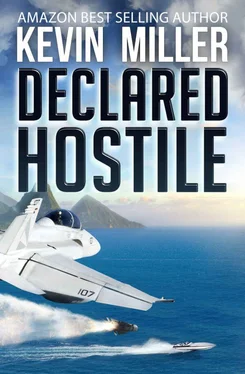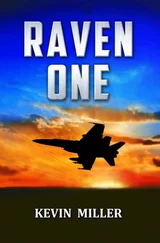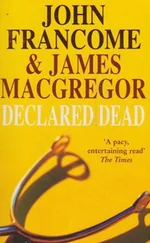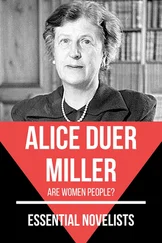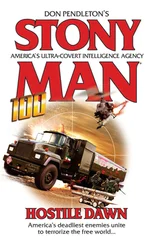Stunned, Wilson worked hard to control his body language. “Cutting” a runway, or in the case of San Ramón, run ways, was a high-risk/low-reward proposition. The craters generated by weapon impacts could be filled with relative ease, which could necessitate a return mission to keep them cut. Or the FAV could just use taxiways for take-offs and landings. They could even use dispersal fields and highway airstrips when they saw the United States coming… which Davies just said he wanted them to see as the ship moved through the Lesser Antilles’ chain. Maybe such a show of force would cause the Venezuelans to back down, but if Wilson did lead a strike, why pull the first punch?
Another factor was the delivery. A dive would be the best way to hurl the weapons into the runways with an even greater kinetic effect, but with the tradeoff was added risk to the aircrew. Would he have to plan a pulled punch, selling it to his experienced aviators as a smart use of tactical airpower? Would this become another half-hearted American military operation? Weed and his misfits were out there literally taking no prisoners, but now — in the current world spotlight — would he have to risk his people for the image of force that the Venezuelans could counter? Devil Davies was a warrior and no doubt knew what he was asking. No, ordering . This had to be direction from Washington. Devil had combat experience in Iraq in the ‘90s. He knew full well what a dive delivery into alerted defenses entailed. Had anyone up the chain pushed back?
“Yes, sir,” Wilson answered, for the moment “living to fight another day,” hoping that CAG could intercede for him. He had a sudden realization that he, too, would be seen by his lieutenants as not pushing back. Later, in private… he hoped.
Up forward, the C-2 props changed pitch, and seconds later all heard a faint thud followed by a ziiiiip sound as the C-2 shot down the track. The catapult shuttle crashed into the water brake with a boom as the aircraft took to the air and turned right off the bow.
A lone “ding” sounded on the 1MC. Admiral Meyerkopf was gone, heading for the beach. Without question, a new sheriff was in town.
Sun Tzu said, “The line between disorder and order lies in logistics….” In the arcane vernacular of military acronyms and jargon, RFF (Request for Forces) is one acronym professional staff officers must keep in mind. Their job is not to fight. Their job is to provide fighters, like Wilson, with the tools, actual and supporting, the fighters need to do their jobs. If Wilson and the aviators of Carrier Air Wing SIX are at the tip of the spear, various logistics staffs are the shaft, tasked to deliver what military urban legend says is “the firstest with the mostest.” This task involves hundreds and thousands of military personnel in and out of uniform who use arcane terms like OPORD, CONPLAN, and OPCON, to name a few. Thousands of miles from the action, these staff undertake a monumental responsibility when going to full-scale war against a capable enemy. Time is always of the essence. Logistics are indeed for professionals.
This concept was dramatically displayed during World War II, when the “Arsenal of Democracy” delivered to American and Allied commanders a tidal wave of American steel that the Axis powers had no answer for. Then, separated by two oceans and relatively safe, America had time to retool her factories while the military forces at her disposal held, and, in some cases, reversed Axis thrusts before fresh men and materiel appeared in the latter half of the war.
It was SOUTHCOM’s job to coordinate the flow of materiel from the United States to the region, to provide the joint component commanders with the bombs and bullets, the fuel and lubricants, and the meat and potatoes needed to execute the Operational Plan, the plan in which Wilson and the others would soon be nameless and faceless cogs. From spare Hornet F404 engines to copy machine toner, the United States could not be caught wanting the “nails” required for victory. And the logisticians ensured they would not be.
A tenet of American military strategy since the Korean War is the concept of forward deployment, to include forces garrisoned in Europe and Asia. Expeditionary in nature, the Navy and Marine Corps live by it, routinely deploying from Continental U.S. bases for months at a time to spots of world tension such as the Persian Gulf and Western Pacific. In earlier times, it was the Mediterranean, North Atlantic, and even the Caribbean.
The Caribbean . Long ignored by Beltway strategists and politicians, the whole region, with the notable exception of Haiti, was a playground for the rich from all over the world. Cruise ships, resorts, green islands, near-perfect weather, megayachts, money. Fantasy . The delights and temptations of the flesh were everywhere in this warm-water paradise, an uncomplicated escape only hours by plane.
It was easy to dismiss the threat of illegal narcotics and the power of the kingpins and narco-states. After all, where was the threat? Most nation-states in the region were social and economic basket cases, with military capability that bordered on laughable. Content to appear to toe Washington’s line, they were addicted to the aid dollars America dispensed to the “downtrodden.” The swath from Panama to Venezuela was swimming in enough petro dollars and illegal drug monies to raise everyone’s standard of living to heights unseen. But, at the behest of the kingpins, the politicians stoked the fires of American exploitation and resentment, banking on American guilt to keep the aid flowing and ensuring that the “War on Drugs” was waged on an ineffective simmer. The pretenses allowed everyone to save face.
At some point, even Daniel Garcia would have enough mansions and yachts, girls and planes. Where else were those dollars going?
In a bizarre arrangement of strange bedfellows, the kingpins moved cash into the hands of state sponsors of terror to help keep the United States off balance in the Middle East. At the cost of, say, a small and “manageable” Iranian footprint, if not for the “protection” afforded by a regime bent on world domination, the largely Catholic, secular, and pleasure-seeking South Americans could rest easy knowing the American behemoth was tied up elsewhere. In like manner, the Russians, cash strapped and with a sizable underclass seeking a drug-induced escape from their own miserable existence, could be depended on to build a submarine — for military use or cartel smuggling, didn’t matter — and to fly nuclear bombers under the Americans’ nose whenever the situation called for it. Everything had its price.
It appeared now that the Americans were tired of the game, and media cameras watching F-16s land in Puerto Rico and full battle-rattle paratroops load into C-17s in North Carolina confirmed it. While forces flowed to Caribbean staging bases and to the waters around Venezuela and Panama, the tyranny of distance ensured that the movement would take time. Unlike other conflicts that required the United States to defend and hold, time was now the enemy of a strategy that required the Americans to strike soon to preclude the Venezuelans from dispersing their assets. The media — and agents watching — confirmed that real airplanes and real soldiers were flowing into the region at a never-before-seen rate to augment the forces already present. For their part, the logisticians counted every stitch in the military whip the long arm of the United States was preparing to crack hard against Venezuela.
* * *
With the sun setting behind her, Coral Sea ploughed east through the waves to take up her position in the Atlantic, away from restricted waters and shielded from the diesel submarine threat. With a “bone in her teeth,” she had spent the afternoon blasting through the Virgin Islands between St. Thomas and St. Croix, in sight of every manner of pleasure craft, merchant, cruise ship and fishing trawler. The warm, 40-knot wind whipped at the hair of excited nugget aviators perched on the swaying bow, observing the islands about them: the small “rock” of Sombrero Island twelve miles to the northeast, Dog Island to the southeast, Anguilla and Saint-Martin behind it. On deck himself to get some fresh air after dinner, Wilson ambled among the parked aircraft in the “corral” between Elevators 1 and 2. Looking south, he noted a sailboat a mile off, spinnaker flying as a Whaler MH-60R made another low pass over it. Davies wanted the ship to be seen, and the people on that boat were getting the full majesty of 100,000 tons of American resolve passing left to right against the dramatic western sky. Wilson figured the boat would soon be turning to avoid the large waves of the carrier’s wake that would be on them in minutes. Closer to Saint-Martin would allow network coverage to send friends the photos they were snapping on their phones.
Читать дальше
